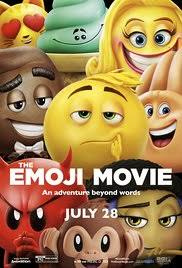
Is it official? Have we finally turned the corner? Has the tipping point been reached? What pray tell am I talking about, you may ask? I am talking about the day our culture uses images more to communicate than it does words. What sign do I have that this day may be upon us? Today is the opening day of the highly anticipated (okay, maybe not – just look at the ratings/reviews) The Emoji Movie.
It’s not enough already that we have to string together images to text/talk with one another. Now, we have to watch these images come to life and motion in the bustling city of Textopolis. In case you are wondering, I won’t be watching the movie. But what is inescapable is the fact that using images is vital for effective communication with the next generation.
It used to be that people were illiterate in our country because of a lack of resources (books, etc.), qualified teachers, or an educational system in whole. Now, we have all the resources we could ever imagine at our disposal to cure this remedy. However, for a play on words, we have figuratively disposed of our means while the ends of being illiterate remain.
We really have come full circle, but my fear is that we are going around in the same circle without getting anywhere. In past ages, people were illiterate because they didn’t have a choice. Today, people are illiterate because they have too many choices. One didn’t choose to be illiterate and one did, but both back then and today, illiteracy remains.
When common people were illiterate (go back to the middle ages), arts ruled the day. In other words, people were dominated more by right-brained thinking (feelings visualization, imagination, intuition, rhythm, holistic thinking, nonverbal cues, daydreaming, arts). As civilization advanced (the printing press came out, etc.), people began to be dominated by left-brain thought (thinking in words, sequencing, linear thinking, mathematics, facts, logic). It’s the old analytical/methodical (left-brain) vs. creative/artistic (right-brain) debate. Left-brain people are better at things like reading, writing, and computations.[1] Right-brain people would prefer to draw or paint and thus express themselves.
Where are we at now? We’re in the middle of transitioning once again to right-brained thinking being the dominant hemisphere of use. How do I know? That’s easy—Just ask yourself this question—How many hours a day is the average person in front of a screen? Yes, there will always be nerds like me who like to read a lot, but the average person prefers to sit in front of a screen and be saturated with pictures or visual stimuli. People defer to read or write because let’s be honest, watching is easier. I don’t think the potato couch lifestyle is good for nurturing healthy growth and development, but the younger generation came out of the womb with a phone in their hand (and can’t imagine anything different). We must not degrade the younger generation for this. They couldn’t help that they came out not in a baby boom like the 1950’s, but a technological boom or information explosion of the likes we have never seen before. We must capitalize on their likes and preferences. We must use images to communicate with them. If we don’t, we might not only lose them, but get lost ourselves.
Like them, love them, or hate them, emojis are here to stay. Why? Because they are emotive expressions that say much more than words say themselves. People string emojis together to say something that might take a whole paragraph to write. If you didn’t like shorthand texts, you will probably hate emojis. But if you hate emojis, will you be able to relate to the next generation? Here is some advice. You don’t have to like emojis and you can even hate The Emoji Movie, but it might do you well to see what emojis are out there. And if Jesus were literally walking the earth today, I know he would use an emoji as the perfect object lesson! 😊
[1] “Left Brain vs. Right Brain: What Does This Mean for Me?” by Ann Pietrangelo, found at www.healthline.com